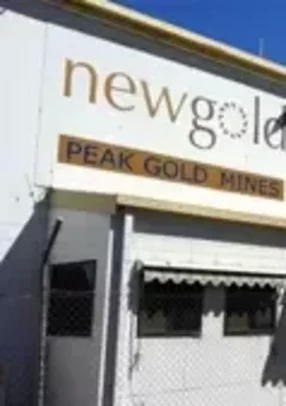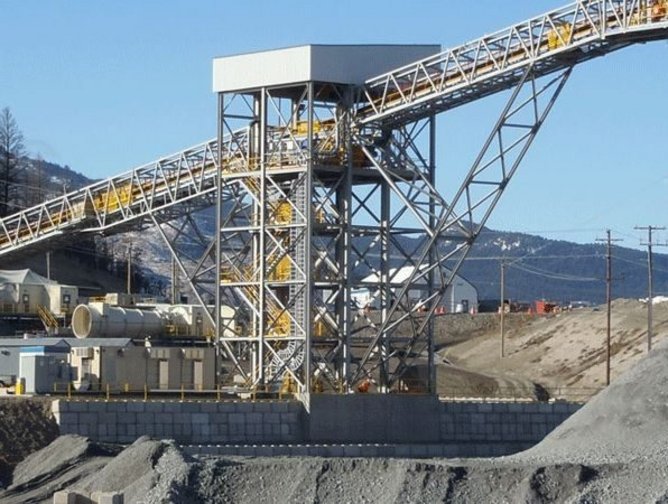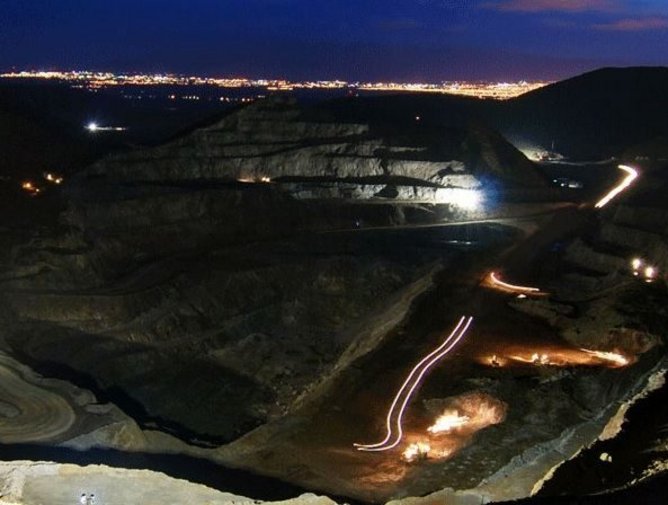
New Gold's Peak Gold Mine
Peak Gold Mines is a large tenement holding in Australia’s Cobar mineral field. Mining operations at Peak Gold began in 1991, and through a series of acquisitions the mine changed hands from Rio Tinto to Goldcorp before finally being acquired by Canadian mining firm New Gold Inc. The mine produces some silver, gold doré which is primarily sold to the Perth Mint, and copper concentrate the majority of which is destined for resource-hungry China. Production levels are approximately 90,000 to 100,000 ounces of gold and 6,000 tonnes of copper metal per year.
Advantage
Being located in Cobar, New South Wales has its benefits. Primarily, unlike most mining ventures in Australia, which can be located hundreds of kilometres from the nearest town or city, Peak Gold Mine is situated by a residential community. Considering the current difficulty in finding skilled miners in Australia, let alone ones willing to live in harsh remote environments, having a town nearby is a huge advantage.
Peak Gold Mine is a deep underground mine with multiple commodities, adding to its advantageous position. “We’ve got good systems and processes in place and a very modern fleet with a well-maintained plant,” says Vice President and General Manager Peter Lloyd. “We’re very established with a good culture. We’ve got a good balance of family and work.
“We’ve got a good resource base to draw from with a mine life past 2017 of known resources. Each year we’ve had a good conversion rate of resources to reserves and are replacing depleted stock with new resources we’ve found.”
Employees
Peak Gold Mines aims to be an employer of choice. “Production staff work a family friendly roster of four days on, four off,” says Lloyd. “For those of us that work a five on, two off schedule we have introduced a nine day fortnight, which allows people to mix both work and family benefits. It makes Cobar a good place to live. We even have some employee housing available and offer housing purchase schemes.”
In regard to training, Peak Gold Mines has a training and development coordinator who is responsible for all training programs across the site. The company even works to attract young miners. Lloyd explains, “We have an apprenticeship scheme and employ six to eight apprentices a year who we usually retain. A lot of our recruits are coming new to the industry, and since there is a skills shortage across Australia, on the job training integrated with work is becoming more common.”
Technology
Considering the depth of Peak Gold Mine’s operations, roughly 1.4 kilometres deep, the company decided to invest in shotcrete capability and ground support concrete arches to support stressed areas. The arches have improved safety conditions in stressed areas dramatically.
“We’re putting in a new Twin 875-kilowatt centrifugal vent fan capable of 280 cubic meters per second at 5 kilopascals at the southern end of the mine,” boasts Lloyd. “We’re also installing a new refrigeration plant to cool the air, making the mine workable year round at those depths.”
In terms of software, the company is in the process of moving its ERP system to SAP, and utilizes Citect SCADA for automated facilities control.
“We just built a new $6.5 million conventional floatation plant replacing our 20 year old columns,” adds Lloyd. “We’ve also upgraded our tailings storage facility. It’s pretty unique, it’s a dry tailings stack with a central deposition of the tailings that creates a conical hill allowing for quick evaporation.”
Continuous Improvement
This year, Peak Gold Mines formed an asset maintenance group to centralise its maintenance services. “This has been quite successful in meeting the challenges of maintaining the plant and replacing equipment,” says Lloyd. “It also helps with new legislation which requires that we identify people accountable for each maintenance discipline.”
The Future
Peak Gold Mines is continually seeking new resources to replace its reserves. With 320 employees, the company has maintained a sustainable work cycle and will continue to provide economic benefit to the Cobar region and Australia’s booming mining sector.
Peak Gold Mines is a large tenement holding in Australia’s Cobar mineral field. Mining operations at Peak Gold began in 1991, and through a series of acquisitions the mine changed hands from Rio Tinto to Goldcorp before finally being acquired by Canadian mining firm New Gold Inc. The mine produces some silver, gold doré which is primarily sold to the Perth Mint, and copper concentrate the majority of which is destined for resource-hungry China. Production levels are approximately 90,000 to 100,000 ounces of gold and 6,000 tonnes of copper metal per year.
Advantage
Being located in Cobar, New South Wales has its benefits. Primarily, unlike most mining ventures in Australia, which can be located hundreds of kilometres from the nearest town or city, Peak Gold Mine is situated by a residential community. Considering the current difficulty in finding skilled miners in Australia, let alone ones willing to live in harsh remote environments, having a town nearby is a huge advantage.
Peak Gold Mine is a deep underground mine with multiple commodities, adding to its advantageous position. “We’ve got good systems and processes in place and a very modern fleet with a well-maintained plant,” says Vice President and General Manager Peter Lloyd. “We’re very established with a good culture. We’ve got a good balance of family and work.
“We’ve got a good resource base to draw from with a mine life past 2017 of known resources. Each year we’ve had a good conversion rate of resources to reserves and are replacing depleted stock with new resources we’ve found.”
Employees
Peak Gold Mines aims to be an employer of choice. “Production staff work a family friendly roster of four days on, four off,” says Lloyd. “For those of us that work a five on, two off schedule we have introduced a nine day fortnight, which allows people to mix both work and family benefits. It makes Cobar a good place to live. We even have some employee housing available and offer housing purchase schemes.”
In regard to training, Peak Gold Mines has a training and development coordinator who is responsible for all training programs across the site. The company even works to attract young miners. Lloyd explains, “We have an apprenticeship scheme and employ six to eight apprentices a year who we usually retain. A lot of our recruits are coming new to the industry, and since there is a skills shortage across Australia, on the job training integrated with work is becoming more common.”
Technology
Considering the depth of Peak Gold Mine’s operations, roughly 1.4 kilometres deep, the company decided to invest in shotcrete capability and ground support concrete arches to support stressed areas. The arches have improved safety conditions in stressed areas dramatically.
“We’re putting in a new Twin 875-kilowatt centrifugal vent fan capable of 280 cubic meters per second at 5 kilopascals at the southern end of the mine,” boasts Lloyd. “We’re also installing a new refrigeration plant to cool the air, making the mine workable year round at those depths.”
In terms of software, the company is in the process of moving its ERP system to SAP, and utilizes Citect SCADA for automated facilities control.
“We just built a new $6.5 million conventional floatation plant replacing our 20 year old columns,” adds Lloyd. “We’ve also upgraded our tailings storage facility. It’s pretty unique, it’s a dry tailings stack with a central deposition of the tailings that creates a conical hill allowing for quick evaporation.”
Continuous Improvement
This year, Peak Gold Mines formed an asset maintenance group to centralise its maintenance services. “This has been quite successful in meeting the challenges of maintaining the plant and replacing equipment,” says Lloyd. “It also helps with new legislation which requires that we identify people accountable for each maintenance discipline.”
The Future
Peak Gold Mines is continually seeking new resources to replace its reserves. With 320 employees, the company has maintained a sustainable work cycle and will continue to provide economic benefit to the Cobar region and Australia’s booming mining sector.


